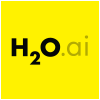A novel adoption of LSTM in customer touchpoint prediction problems
Who is this presentation for?
- Data scientists, machine learning practitioners, data engineers, solution architects, and entrepreneurs
Prerequisite knowledge
- Familiarity with LSTM, Keras, TensorFlow, Python, deep learning, and seq2seq
What you'll learn
- Understand the pros and cons of implementations of LSTM for the touchpoint use case and how LSTM offers flexibility to model customer journey and conversion funnel
- Learn how to model the customer journey as a sequence prediction problem
Description
LSTM networks are widely used in solving sequence prediction problems, most notably in natural language processing (NLP) and neural machine translation (NMT). In particular, the sequence-to-sequence (seq2seq) model is the workhorse for translation, speech recognition, and text summarization challenges. If a collection of individual sequences of events are organized as a corpus, an LSTM model may be constructed to predict the target outcome (i.e., conversion) or target sequence of events (predicted touchpoint sequence that leads to conversion).
The adoption of LSTM in touchpoint prediction stems from the need to model the customer journey or the conversion funnel as a series of touchpoints. For an advertiser or marketer, taking into account the sequence of events that leads to a conversion adds tremendous value to the understanding of conversion funnel and impact of types of touchpoints and can even identify high potential leads. With LSTM, touchpoint prediction can be framed to four different types of prediction problems: sequence prediction (model predicts future sequence to be TV-TV-buy), sequence classification (model predicts target outcome to be buy), sequence generation (model predicts target sequence that contains similar characteristics as input sequence—i.e., repeat buy), and sequence-to-sequence prediction (model predicts a target sequence that contains “buy”).
KC Tung explains why LSTM provides great flexibility to model the consumer touchpoint sequence problem in a way that allows just-in-time insights about an advertising campaign’s effectiveness across all touchpoints (channels). LSTM models can be implemented at scale to identify potential marketing leads based on known touchpoint sequences during the campaign, empowering advertisers to evaluate, adjust, or reallocate resources or investments in order to maximize campaign effectiveness. Along the way, KC offers demos of LSTM models implemented in Keras and TensorFlow.

KC Tung
Microsoft
KC Tung is an AI architect at Microsoft. Previously, he has been a cloud architect, ML engineer, and data scientist with hands-on experience and success in the development and serving of AI, deep learning, computer vision, and natural language processing (NLP) models in many enterprise use case-driven architectures, using open source machine learning libraries such as TensorFlow, Keras, PyTorch, and H2O. His specialties are AI and ML in end-to-end model and data structure design, testing, and serving in the cloud or on-premises, and technical core, the design of experiments, hypothesis development, and reference architecture for AI and ML in cloud-centric implementation. KC holds a PhD in molecular biophysics from the University of Texas Southwestern Medical Center in Dallas, Texas.
Comments on this page are now closed.
Sponsorship Opportunities
For exhibition and sponsorship opportunities, email aisponsorships@oreilly.com
Partner Opportunities
For information on trade opportunities with O'Reilly conferences, email partners@oreilly.com
Contact Us
View a complete list of AI contacts
©2018, O'Reilly Media, Inc. • (800) 889-8969 or (707) 827-7019 • Monday-Friday 7:30am-5pm PT • All trademarks and registered trademarks appearing on oreilly.com are the property of their respective owners. • confreg@oreilly.com














Comments
Hi Veer, thank you for attending my talk. You will find my pptx in my public github depository https://github.com/shinchan75034/LSTM_TouchPoint
kctung75034@gmail.com
Hello, loved your presentation. Could you share your slides? It will be really helpful.
Thanks a lot.
Hoping to hear from you soon.